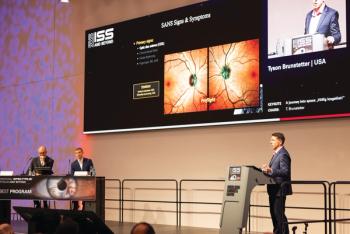
Cyclosporine helps prevent progression of dry eye
A recent study showed that moderate to sever dry eye disease can be best treated with anti-inflammatory medications such as topical cyclosporine. According to one ophthalmologist, cyclosporine can significantly limit progression of dry eye disease and should be considered a 'go-to' therapy for this patient population.
"There is an emerging consensus on what the standard of care is for dry eye, and in my experience, cyclosporine can be a leading therapeutic solution here. However, choosing the appropriate medication depends very much on the level of severity of the disease," said Sanjay N. Rao, MD, Lakeside Eye Clinic, Chicago.
"In patients with mild dry eye, or level 1, one can often achieve a substantial relief of dry eye symptoms with the use of artificial tears and ointments," he continued. "However, patients with moderate to severe dry eye symptoms-or levels 2 to 3-will likely require anti-inflammatory medications such as topical cyclosporine or corticosteroids, because these patients are at a higher risk of a worsening of their disease, with significant discomfort and significant visual symptoms."
Dr Rao recently conducted a prospective, investigator-masked, single centre, 12-month study in which 74 patients who had dry eye syndrome were randomly assigned to receive either topical cyclosporine or artificial tears (Refresh Dry Eye Therapy [formerly Refresh Endura], Allergan) twice daily. At baseline, approximately 67% of patients in both treatment arms had moderate dry eye symptoms and 33% had severe dry eye symptoms. Progression of dry eye disease was assessed by International Task Force guidelines. Study participants were evaluated at baseline and at months 4, 8, and 12.
Results showed that topical cyclosporine was able to decrease the rate of disease progression in 94% of patients; artificial tears decreased the rate of disease progression in 68% of patients who received them. At the 1-year follow-up, patients who received cyclosporine showed a 24.1% (1.9 mm) mean improvement in their Schirmer's test scores compared with a mean decrease of 2.4% (0.18 mm) in patients who were treated with artificial tears. Similarly, the mean tear film breakup time was increased in patients who received cyclosporine therapy compared with those treated with artificial tears, in whom it decreased (34 versus –7 sec, respectively). Also, goblet cell density improved by 25% in the cyclosporine group compared with a decrease of 3% in the artificial tear group at the 1-year follow-up.
'Act quickly and decisively'
"Many people assume that the severity of dry eye cannot progress very quickly; however, as we saw in our study, [the condition in] up to one-third of patients with moderate to severe dry eye can significantly worsen within a 1-year period," Dr Rao said. "Therefore, I believe it is important to act quickly and decisively in patients suffering from moderate to severe dry eye syndrome and to treat these patients, to limit the chance that their disease will worsen."
According to Dr Rao, it would be appropriate to begin a course of topical cyclosporine concurrently with corticosteroids in patients with level 2 symptoms who had risk factors for progression. Anti-inflammatory therapy such as cyclosporine and corticosteroids commonly is used in combination. Initially, a corticosteroid and cyclosporine are taken concurrently for a couple of weeks, and then the corticosteroid dosage is tapered off and cyclosporine therapy continues.
Many specialists believe that patients who have moderate disease require cyclosporine maintenance therapy for a minimum of 9 to 12 months, but according to Dr Rao, once cyclosporine therapy is stopped, symptoms may recur in up to 75% of these patients. Therefore, most patients with level 2 disease need to be taking long-term maintenance therapy, he said.
According to Dr Rao, the only adverse events associated with cyclosporine 0.05% in this study were significant burning and stinging in approximately 15% of patients. Considering the severity of the dry eye symptoms as well as the common adverse events seen with corticosteroids, however, cyclosporine appears to be the better choice in therapy, he added.
"When we think about patients with moderate to severe dry eye syndrome, simply adding artificial tears is really suboptimal therapy," Dr Rao said.
"We need to be using anti-inflammatory therapy like cyclosporine in patients with moderate disease because it limits the progression of the disease and prevents patients' conditions from getting worse," he concluded. "Further, it is easier to treat a patient with moderate disease compared with a patient with severe disease, and so addressing dry eye sooner will only benefit the patient."
Newsletter
Get the essential updates shaping the future of pharma manufacturing and compliance—subscribe today to Pharmaceutical Technology and never miss a breakthrough.




